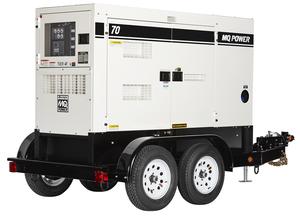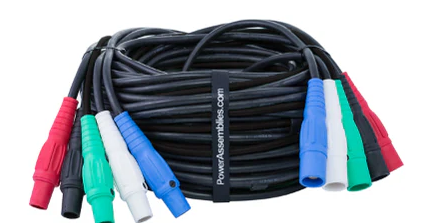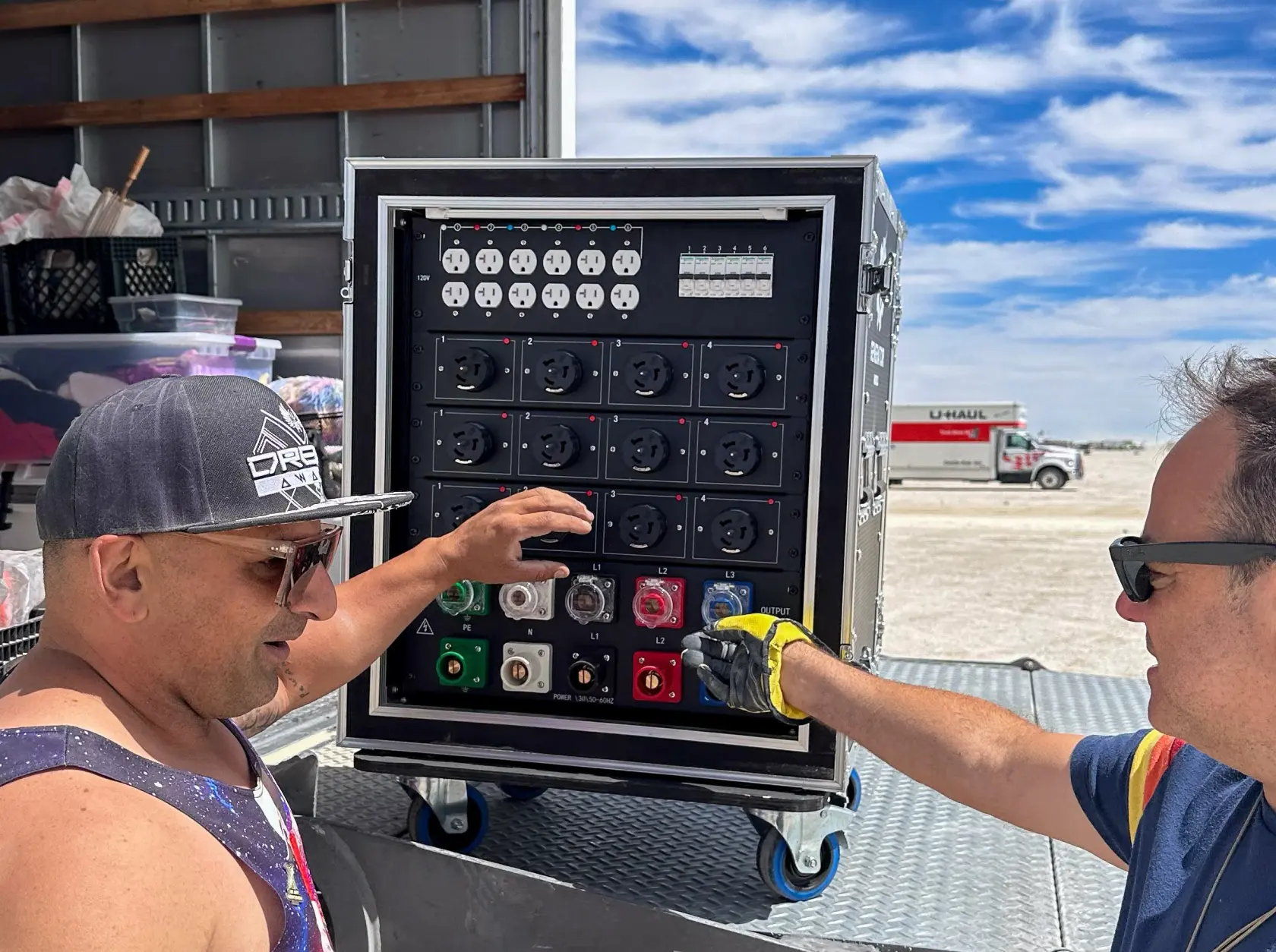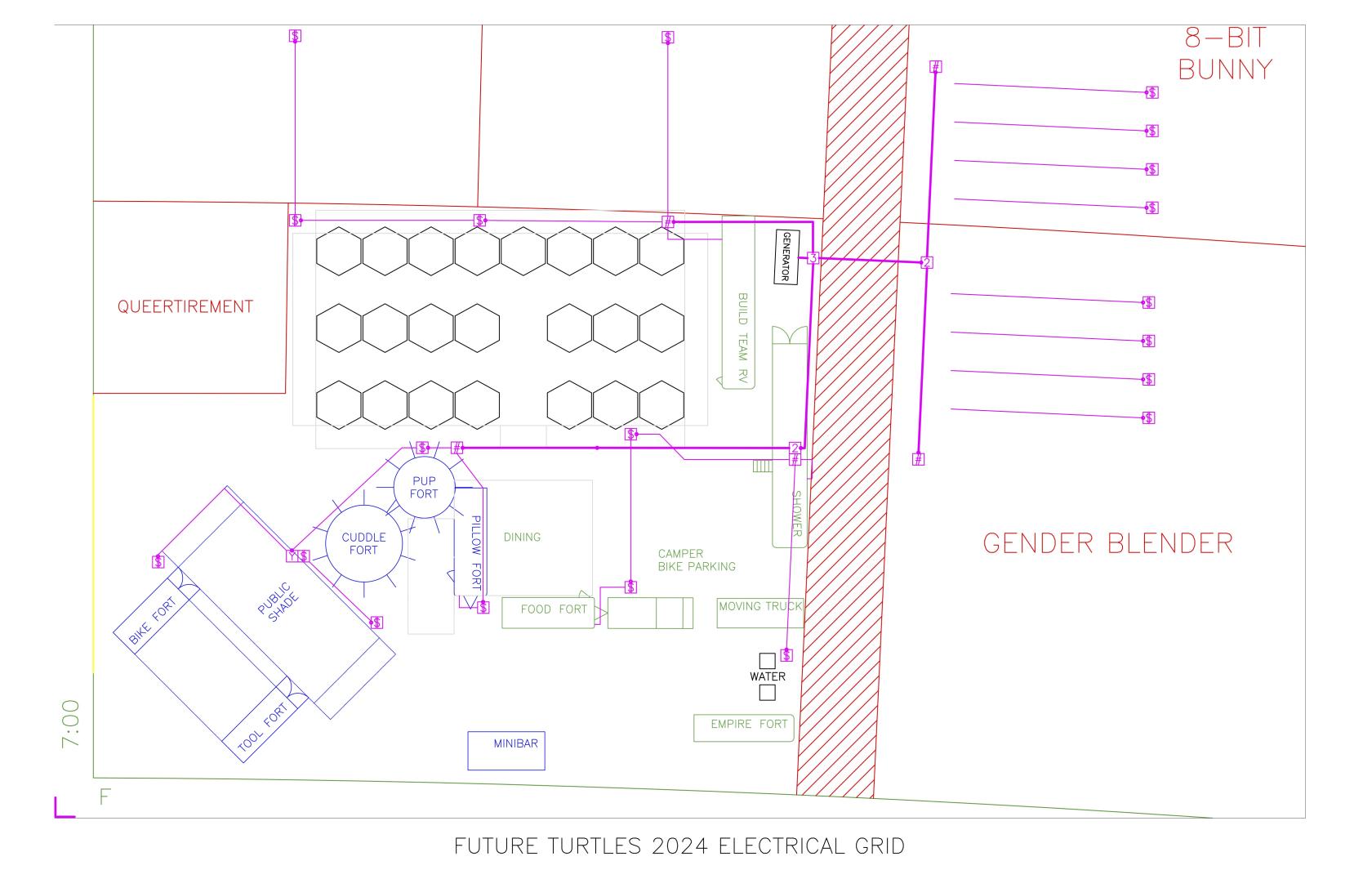On Playa Electrical Grid
On playa we rent a large 56 kW (70 kVA) generator that has ample power for our needs and all the camps in our hub. In 2024 we received a Multiquip DCA-70SSIU4F generator that looks like this:
(ours is not usually delivered on a trailer like that so it doesn't have wheels).
Expand to learn more about big generators at Burning Man
Brad Templeton's Guide to Burning Man Power Grids with Big Generators
Electrical Systems training course at Burning Man Hive
and join the Burning Man Generators group on Facebook.
The generator outputs three phase power. The three phases are called U, V, and W. Any one of its phases can be combined with Neutral, also called Ø, to get 120 Volts AC. You can also combine any two phases together, say U and V, to get 207 Volts AC. (We need this in the kitchen fort for the compressor that runs the walk-in refrigerator).
Coming out of the generator, we use five banded cables to distribute the three phases to distribution boxes around our camp. Those cables are U, V, W, Ø, and Ground. Neutral (Ø) is always color-coded white and Ground is always Green. The others are Red, Black, and Blue, but the order doesn't matter. Here is what a banded cable looks like:
In 2024, we had three distribution boxes around our camp, and provided one to 8-bit Bunny and one to Gender Blender, for a total of five. The distribution box's job is to take that three-phase power - all five cables - as input, and break it down into 50 Amp California Twist Lock (also known as CS63xx) outputs. The twist lock cables look like this:
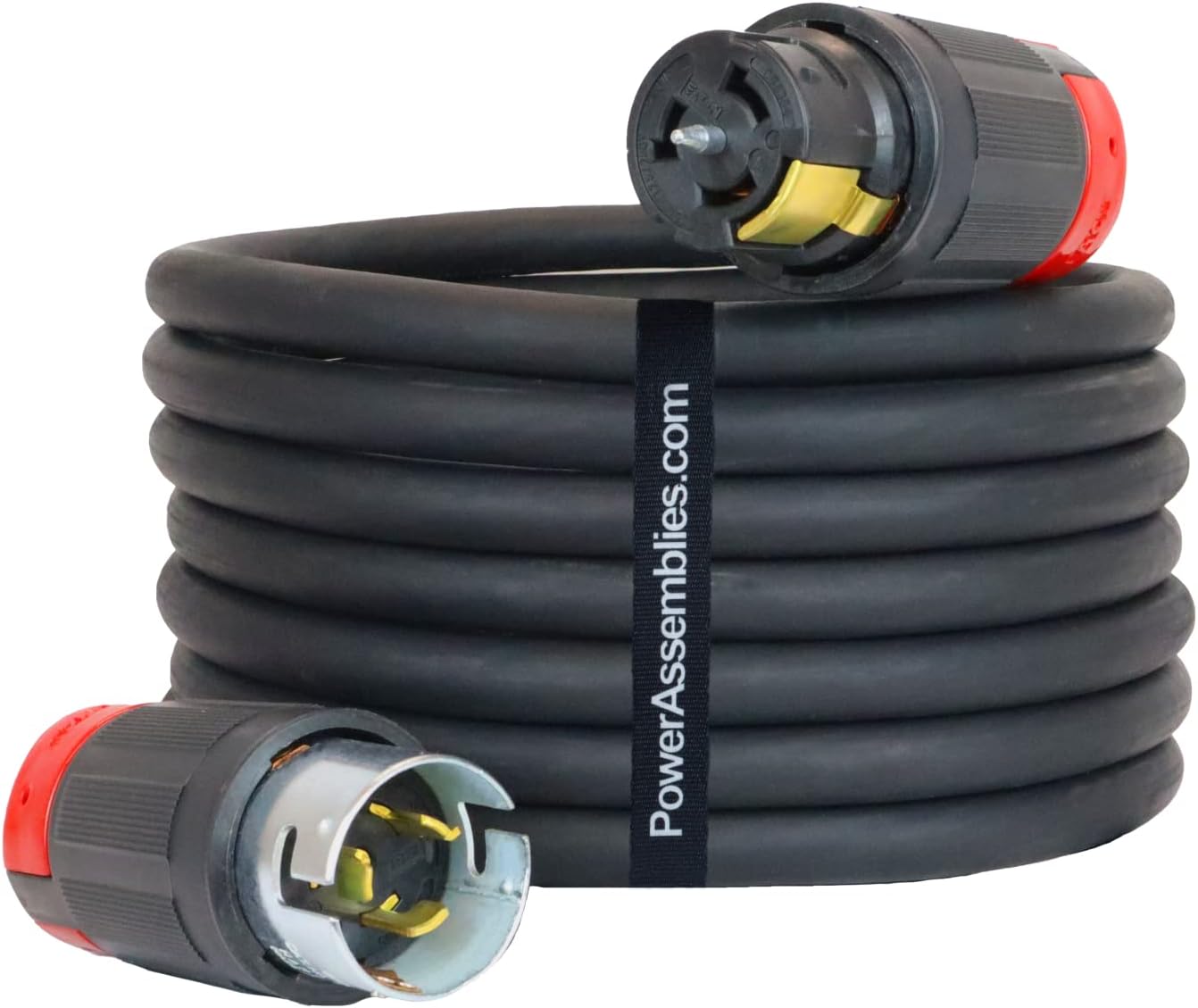
Those only have four conductors, not five. They only carry two of the three phases. The distribution box splits up the phases so that some outputs get UV, others get VW, and others get UW.
It is critical to keeping the generator running well that we maintain approximately equal loads on each of the three phases U, V, and W. This is called load balancing. During the burn week, we monitor the load (in amps) on each of the three phases. If one phase is overloaded, we will move some of the load over to an underloaded phase by changing which 50 amp plug is plugged into which outlet on the distribution box.
A very simple distribution box has one three phase input, six 50 amp outputs, and some breaker switches to turn on and off the outputs and prevent fires if someone draws more than 50 amps. HoweverHowever, in 20242024, Generator World, our generator vendor, brought us, at no extra charge, some amazingly incredible distribution boxes that had 1812 outputs instead of 6, a bunch ofdozen regular 120V household plugs for convenience, and built-in digital meters on the back that made it really easy to do load balancing.
Each of the 50 amp outputs from the distribution box can be fed, via a single 50-amp cable, into a Spider Box. A spider box takes the 50 amp cable as input, and contains a whole bunch of household-style electrical outlets that you can actually plug things into.
Our camp owns 20 RhinoBox RB-300AE Spider Boxes (TurtleBox Manual.pdf), so we place these near where a lot of power is needed. In many cases, instead of plugging appliances directly into the spider box, we end up using some outdoor-rated extension cords and power strips to further distribute power.
A Spider Box has numerous safety features including breakers that flip in case you draw too much power or a short is detected, and GFI switches that flip if current leaves the box and doesn't return because it went elsewhere to shock someone. This makes them completely safe to use outside, in the rain, and with faulty equipment without risk of shock or fire.
The following figure shows our 2024 electrical layout in purple. Thick lines show five banded cables leading to # distribution boxes. Thin lines show 50-amp cables leading to $ spider boxes. 2 and 3 designate "hard twofers" and "hard threefers" used to split five banded cables. Y indicates a 50-amp y-splitter. We always let 8-bit Bunny and Gender Blender lay out their own cable inside their camp however they see fit so those cables are not shown connected.
Important Links
- Google Sheets: Future Turtles Generator Usage in Amps Historical data on how much power we draw
- Google Sheets: AC Distribution Equipment Schedule Detailed list of distribution equipment that we own and rent
- Google Sheets: Fuel Consumption How much fuel we've consumed per day on the big generator

